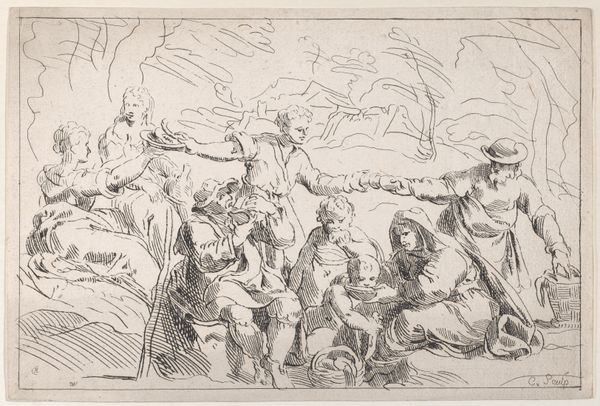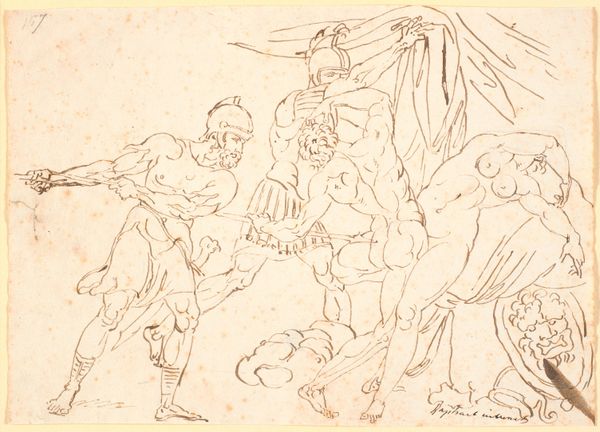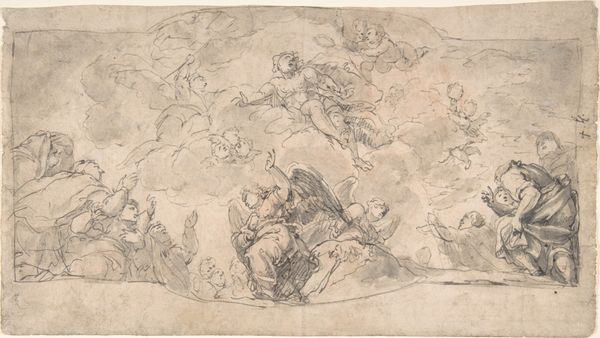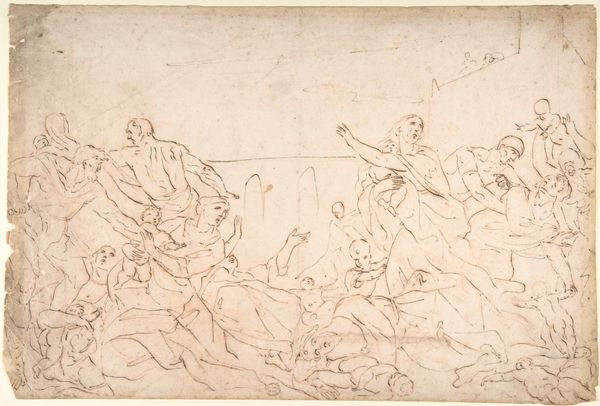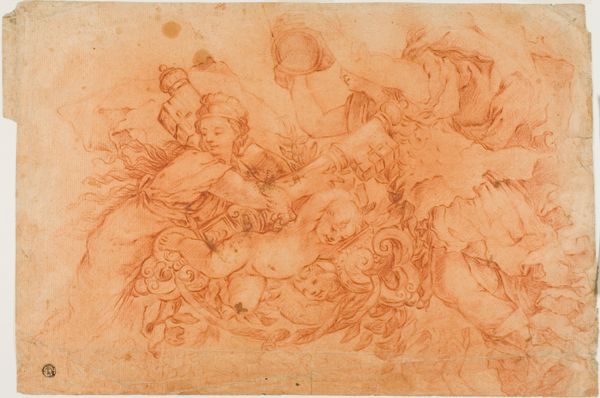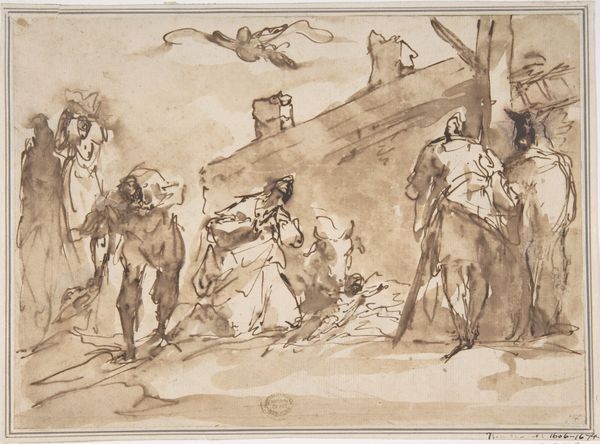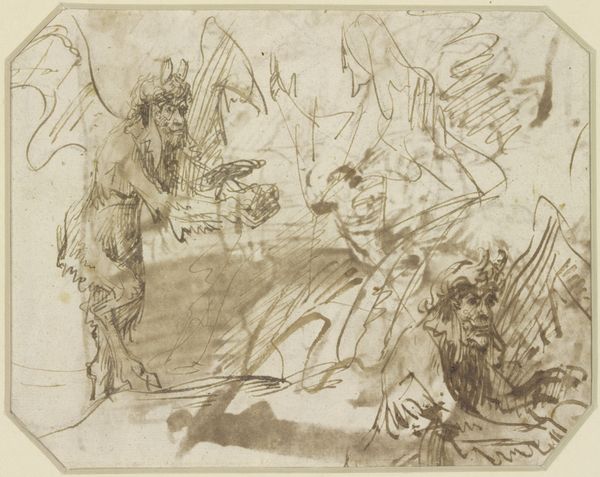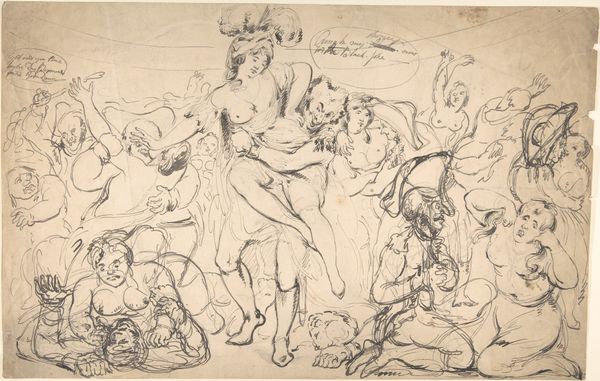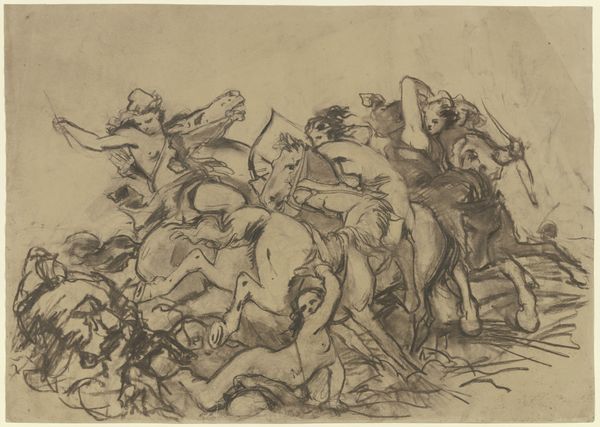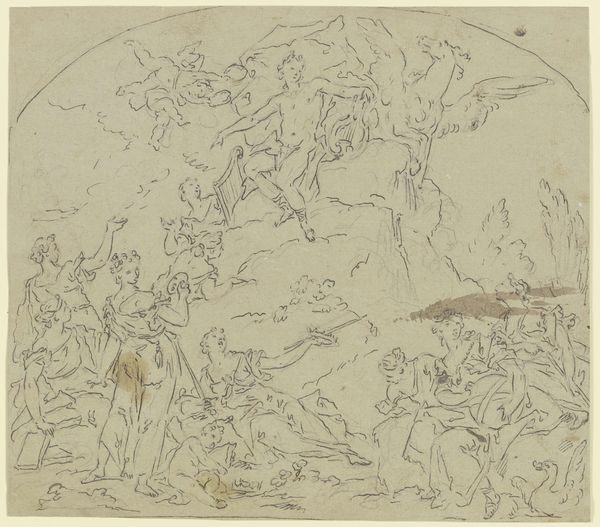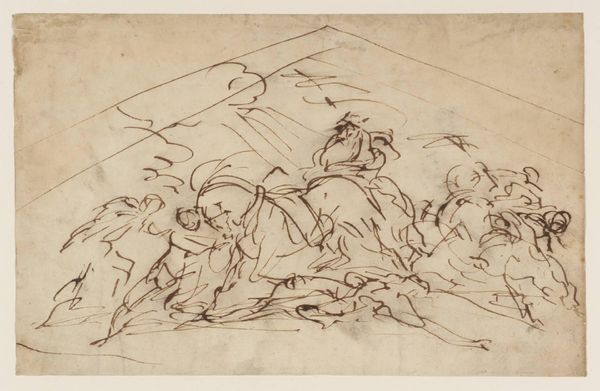
The Pregnancy of Callisto Discovered by Diana 1612 - 1666
0:00
0:00
drawing, print, ink, pen
#
drawing
#
ink drawing
#
allegory
#
baroque
#
ink painting
# print
#
pen sketch
#
figuration
#
ink
#
pen
#
history-painting
#
nude
Dimensions: 7 3/4 x 11 3/16in. (19.7 x 28.4cm)
Copyright: Public Domain
Curator: Before us is "The Pregnancy of Callisto Discovered by Diana," an ink drawing by Antonio Molinari, created sometime between 1612 and 1666. It currently resides at the Metropolitan Museum of Art. Editor: My initial reaction is that this drawing feels chaotic yet deliberate. The flurry of lines creates a dynamic tension, almost as if the scene is unfolding in real-time. Curator: Molinari's use of ink and pen showcases a clear example of Baroque aesthetics through swift strokes and high contrast; look at the materiality of these lines. The quick movements evidence immediacy. How might such material choices shape the work’s availability, reception, or economic value for contemporary audiences? Editor: I think that the dramatic composition leads us to interpret Molinari's use of line as a means to amplify narrative clarity and elicit emotional engagement. The gestures, while frenzied, create a legible space. The linear hatching models three dimensions of the figures and builds a convincing landscape. It pulls the viewer right into the heart of the scene. Curator: Exactly. And it makes me wonder, what societal demands or artisan collaborations informed Molinari's adoption of ink as a tool? Was ink the cheaper tool for less wealthy patrons than paintings, thereby becoming the favored means of accessing allegorical renderings for more average citizens? Editor: Perhaps. The thematic weight seems undeniably present through the artifice of representation. Diana’s accusatory gesture and Callisto’s startled response generate dramatic movement. Do you see, even within a sketch, a carefully crafted theatrical display of emotions? Curator: I see it as the intersection of accessible material practices, mythological narratives, and the evolution of Baroque figuration for expanding audiences. This challenges notions of high and low art, suggesting even drawings made through affordable and distributable mediums can effectively shape historical discourse. Editor: Precisely. Analyzing this drawing's formal qualities offers access to deciphering the historical codes embedded within this artistic creation, enriching its reception, accessibility, and long-term resonance. Curator: Absolutely. And exploring such connections invites deeper engagement. It brings forward more discussion about consumption in Baroque society and art-making processes. Editor: Yes, and hopefully it promotes further inquiries into semiotic, structural, and even philosophical engagements of such Baroque artwork for all contemporary viewers!
Comments
No comments
Be the first to comment and join the conversation on the ultimate creative platform.

